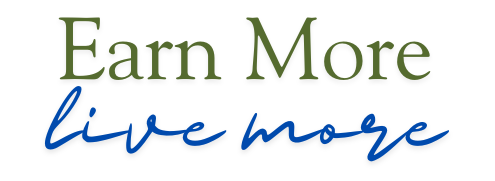Marketplace Showdown: Etsy Vs. EBay Vs. Amazon For Sellers

Selling online is like stepping into a vast digital jungle. Each marketplace has its own vibe, and choosing the right one can impact your success as a seller. It’s important to clarify what you need first before anything else.
Think about your audience. Who are they? Are you aiming at collectors, casual shoppers, or folks searching for unique handmade items? Etsy’s the place for creativity, eBay is a playground for variety, and Amazon handles it all with its massive reach. Finding where your tribe hangs out is crucial.
Selling basics play a huge role too. Fees, listings, and user interfaces vary from platform to platform. While Etsy appeals to artisans with its straightforward approach, eBay offers auction-style bargaining, and Amazon provides rigorous professional settings. Understanding these differences can help you determine where your products fit best.
Don’t forget the power of reach and trustworthiness. Buyers gravitate towards platforms that they’ve heard of. Amazon’s well-known for fast delivery and broad product selection. Etsy effortlessly carries an artisanal brand. And eBay? It’s that reliable mix of the old bargain hunter’s haven. Picking a platform where your goods feel natural and where customer trust is already established is key.
Finally, SEO shouldn’t be underestimated. Snazzy listings make your products more visible. An understanding of algorithms ensures your products aren’t just out there but are seen by those who matter. Keywords, tags, and descriptions can work wonders if used properly. Reach the right audience with sharp, strategic SEO on any chosen platform.
Etsy: A Haven for Artisans and Craft Enthusiasts
Etsy has carved out a niche for itself that feels kind of magical, becoming a sanctuary for artisans and those who treasure unique, handmade, or vintage items. If creativity is your game, Etsy’s where you’ll want to play. The platform highlights the value of individualism, allowing sellers to showcase their creations in a way that feels authentic and personal.
The community-driven nature of Etsy is one of its standout features. It’s more than just a place to sell your goods; it’s a community where relationships and engagement matter. Sellers and buyers alike bond over shared appreciation for craftsmanship. This dynamic fosters customer loyalty, often translating into repeat sales and word-of-mouth referrals.
Like everything awesome, there are challenges too. Etsy’s fee structure can be daunting for newcomers. They’ve got listing fees, transaction fees, and payment processing fees. But don’t worry. With the right strategies and a grasp on how to price your items effectively, sellers often find a sweet spot that covers costs while ensuring profitability.
Etsy isn’t just about listing products and waiting for sales. Building a brand here means harnessing the platform’s features to your advantage. Consistent aesthetics, compelling shop profiles, and using keywords in softer, more appealing ways help improve visibility. Long-term success stories come from sellers who look at Etsy as not just a marketplace but a storytelling platform.
EBay: The Auction House with Global Appeal
EBay’s uniqueness lies in its fusion of traditional and modern selling approaches. Once known primarily for auctions, it’s evolved into much more. Sellers here have flexibility, whether through auction-style listings or fixed-price formats. This allows for a diverse array of products, from collectibles to the latest electronics. The auction format can drive excitement and engage buyers looking for deals.
Diversity is eBay’s game, making it a go-to for selling new, used, rare, or even quirky items. Sellers find room to be creative, targeting niche markets or broader audiences. Its global reach means that a unique sneaker in your closet could find a new home halfway across the world. However, with global opportunities come global competition, so carving out a unique selling proposition and offering competitive pricing is essential.
EBay offers a treasure trove of tools and analytics for sellers. These tools provide insights into what’s working and what’s not, allowing sellers to tweak their strategies on the go. Understanding these can give you an edge in optimizing listings and managing inventory effectively. Keeping up with trends and harnessing data-driven insights help maintain relevancy and grow your business.
Navigating competition on eBay can be intense, but success lies in learning from the best. Top sellers often share insights and strategies through eBay’s community forums and resources. Engage with these materials frequently for real-world advice on enhancing your seller journey. Developing a strategy that reflects both the marketplace’s strengths and your unique offerings can make a significant difference.
Amazon: Beyond the Everyday Marketplace
Amazon stands in a league of its own, offering a platform that’s become synonymous with online shopping. Its vast reach is unparalleled, attracting millions of buyers worldwide. For sellers, tapping into this audience means incredible opportunities but also demands understanding the intricacies of its marketplace.
Prime has fundamentally changed the game for both buyers and sellers. The allure of fast, reliable shipping entices a large consumer base, and as a seller, joining the Prime program can significantly boost product visibility and sales. However, managing inventory and fulfillment can get complex, which is where Fulfillment by Amazon (FBA) comes into play.
FBA is Amazon’s way of saying they’ll handle the storage, packing, and shipping for you. It’s a service that can ease logistical headaches, allowing you to focus more on scaling your business. Understanding the costs and benefits of FBA is key to making informed decisions. Sellers often find it worthwhile due to the enhanced customer trust and service quality.
Seller account levels are Amazon’s tiered approach to helping businesses grow. Starting with an individual account and scaling up can provide access to more features and support. Knowing the right time to upgrade helps maximize benefits and accessibility to advanced selling tools.
What truly sets Amazon apart is its use of AI and algorithms that tailor the shopping experience to each buyer. For sellers, this means optimizing product listings with precise keywords and engaging content to align with these algorithms. Meeting Amazon’s standards while leveraging its technology can propel your seller journey to new heights.
There you have it, which side hustle are you going to try today?







As someone who’s dabbled in online selling, I really appreciate how each platform serves its own unique purpose. Etsy truly shines for artisans and craft makers – I started selling handmade digital print on demand posters there and found the community incredibly supportive. The buyers really do care about the story behind each piece, which makes marketing feel more authentic.
I’ve noticed exactly what the article mentions about eBay’s evolution. While many still think of it as just an auction site, it’s become much more versatile. I had success selling vintage collectibles there because the global reach helped me find the right niche buyers. The analytics tools were surprisingly helpful in figuring out the best pricing strategy.
Amazon is definitely the heavyweight when it comes to reach, but I think the article makes a great point about considering the complexity of FBA. While the Prime badge can boost sales, new sellers should carefully weigh the storage fees and requirements before jumping in. I learned this the hard way when I tried selling seasonal items!
The key takeaway for me is that success isn’t just about picking the biggest platform – it’s about matching your products and business style to the right marketplace. Each platform has its sweet spot, and understanding these differences is crucial for anyone looking to start selling online.
What’s your experience been like with any of these platforms? I’d be curious to hear which one worked best for your products!
Hello Jay,
We have found that each platform has its unique pluses and minuses as you highlighted. The key is finding which one fits your business plan, needs, and goals the best and whether you are able to live with any of the negatives. I personally like Etsy the most, but that is because it appeals to my artistic nature. Again, it comes down to personal preference. The best monetized site I have found is Wealthy Affiliate with its strong support and profit potential.
This article offers great insights into the pros and cons of Etsy, eBay, and Amazon for sellers. I’ve personally used eBay for unique collectibles, and the auction format has helped drive interest. However, I’m curious about how people balance fees across these platforms, especially Etsy’s higher listing fees versus Amazon’s FBA costs. Do sellers find that the benefits of wider reach on Amazon justify these expenses? Looking forward to hearing more experiences and advice!
Zachary,
You bring up a great point about balancing the costs on different platforms, especially with Etsy’s higher listing fees and Amazon FBA costs. Sellers often have to weigh the expenses of these platforms against the potential for higher sales volume or wider reach. Here’s how I see this:
Etsy charges the following:
Listing Fee: Etsy charges a $0.20 listing fee per item, which is relatively low. However, the real costs can add up quickly if you have a lot of listings.Transaction Fees: Etsy takes a 5% transaction fee on the sale price (including shipping).Payment Processing Fees: These vary depending on your location but typically range from 3% + $0.25 (in the U.S.).Advertising Fees: If you run Etsy Ads, you pay based on your ad spend. This is optional but can increase visibility within Etsy’s marketplace.
So, my take on all this is that Etsy’s fees are often seen as more manageable for sellers who have lower volume or niche items. It’s more suited for handmade, vintage, or unique items where customers are willing to pay a premium for the individuality and quality.
Amazon charges the following:
Fulfillment Fees: Amazon charges fulfillment fees for handling storage, picking, packing, and shipping your products. These fees depend on the size and weight of your items, and they can be pretty high for smaller, lower-priced products.
Referral Fees: Amazon takes a percentage of each sale, which can range from 6% to 45%, depending on the category. For most categories, the fee is around 15%.Storage Fees: If you store products in Amazon’s warehouses for extended periods, you’ll face additional storage fees (which can increase during peak months like Q4).
My take is that the convenience of FBA is that Amazon handles a lot of the logistics, and products are eligible for Prime, which can dramatically boost visibility and sales potential. However, these fulfillment costs and storage fees can eat into profits, especially for small or low-margin items.
I believe sellers need to research and weigh the following:
Understanding profit margins: Sellers typically factor in platform fees and fulfillment costs into their pricing strategy. For lower-margin items, it might be tough to absorb Amazon’s fees, but if you have a product that sells at a higher price point, the extra fees might be more manageable.Diversifying platforms: Some sellers use both Etsy and Amazon, finding a balance between lower fees on Etsy for their niche products and reaching a larger audience on Amazon for other products.Strategic use of FBA: Some sellers use FBA for high-demand, high-volume items but fulfill others on their own to save on fulfillment fees. This hybrid approach allows them to take advantage of Amazon’s reach without overwhelming their margins.
It basically boils down to this:
Etsy: Ideal for niche products, handmade goods, and vintage items. While the fees might feel steep in some cases, they’re generally more manageable for lower-volume shops and highly unique products.Amazon: Great for products that appeal to a wide audience, especially when you’re selling in larger volumes. FBA can save time and offer the potential for higher sales due to Amazon’s reach and Prime eligibility, but the fees can add up quickly, especially for smaller items.
Have you thought about expanding to Amazon, or are you focusing primarily on platforms like eBay and Etsy for now?
Hi,
Loving the deep dive into the digital jungle of online selling! Your breakdown of each platform’s vibe is spot on. I remember when I first started selling handmade jewelry on Etsy. The community-driven nature and the appreciation for craftsmanship made it feel like home. It was a bit daunting at first with all the fees but finding that sweet spot in pricing really helped.
I’m curious, have you found any particular strategies that work best for optimizing SEO on these platforms?
Keep those insights coming!
Jay,
I made digital prints on Etsy and it was a wonderful experience! Just like you said: it was a bit daunting at first with all the fees, but finding that sweet spot in pricing was literally priceless!!
In my experience I have found, for example, Etsy, the best way to optimize SEO is to optimize the titles and tags, have clear description for the products, use high quality photos, don’t be afraid to try different price strategies, encourage reviews, and update listings regularly.
Thanks for taking the time to read this article Jay!